
Industrial technology company Fortive (NYSE:FTV) reported revenue ahead of Wall Streets expectations in Q3 CY2025, with sales up 2.3% year on year to $1.03 billion. Its non-GAAP profit of $0.68 per share was 19.5% above analysts’ consensus estimates.
Is now the time to buy Fortive? Find out by accessing our full research report, it’s free for active Edge members.
Fortive (FTV) Q3 CY2025 Highlights:
- Revenue: $1.03 billion vs analyst estimates of $1.01 billion (2.3% year-on-year growth, 1.8% beat)
- Adjusted EPS: $0.68 vs analyst estimates of $0.57 (19.5% beat)
- Adjusted EBITDA: $309.4 million vs analyst estimates of $279.7 million (30.1% margin, 10.6% beat)
- Management raised its full-year Adjusted EPS guidance to $2.65 at the midpoint, a 3.9% increase
- Operating Margin: 15.5%, down from 17.1% in the same quarter last year
- Free Cash Flow Margin: 25.9%, down from 28.2% in the same quarter last year
- Market Capitalization: $16.63 billion
Company Overview
Taking its name from the Latin root of "strong", Fortive (NYSE:FTV) manufactures products and develops industrial software for numerous industries.
Revenue Growth
A company’s long-term sales performance is one signal of its overall quality. Any business can put up a good quarter or two, but the best consistently grow over the long haul. Fortive struggled to consistently generate demand over the last five years as its sales dropped at a 2.1% annual rate. This wasn’t a great result and is a sign of poor business quality.
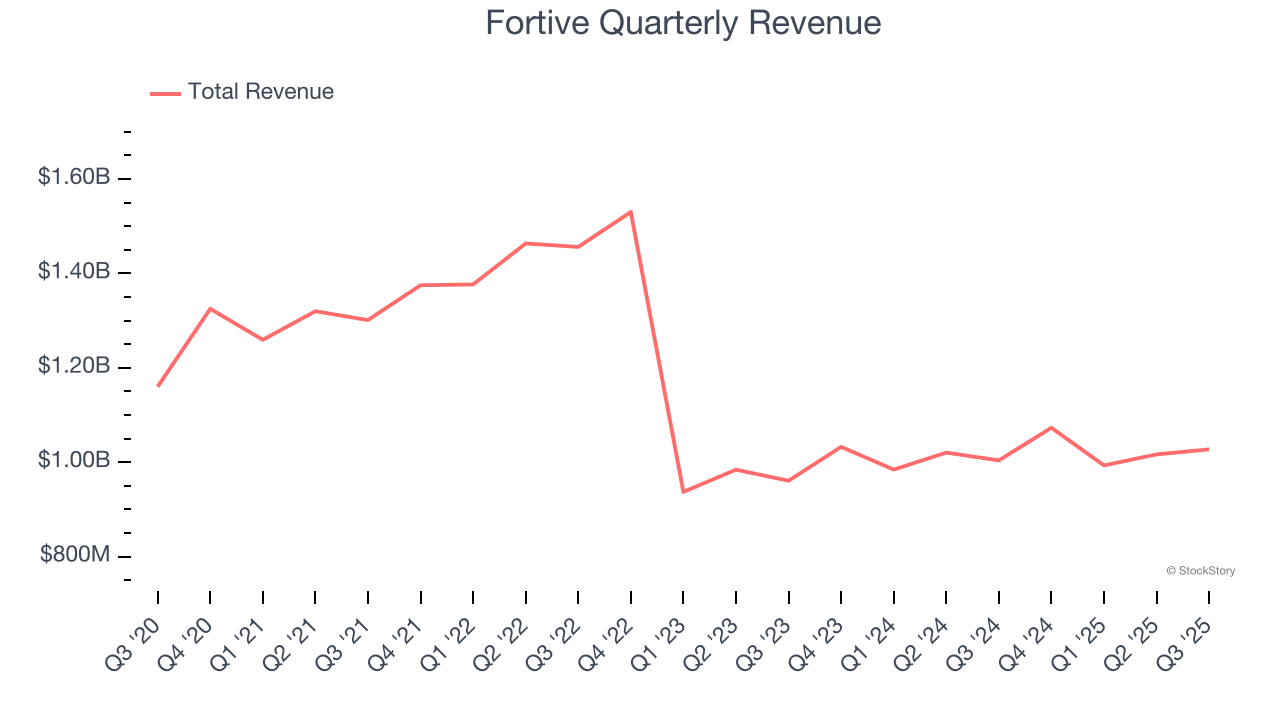
We at StockStory place the most emphasis on long-term growth, but within industrials, a half-decade historical view may miss cycles, industry trends, or a company capitalizing on catalysts such as a new contract win or a successful product line. Fortive’s recent performance shows its demand remained suppressed as its revenue has declined by 3.5% annually over the last two years. 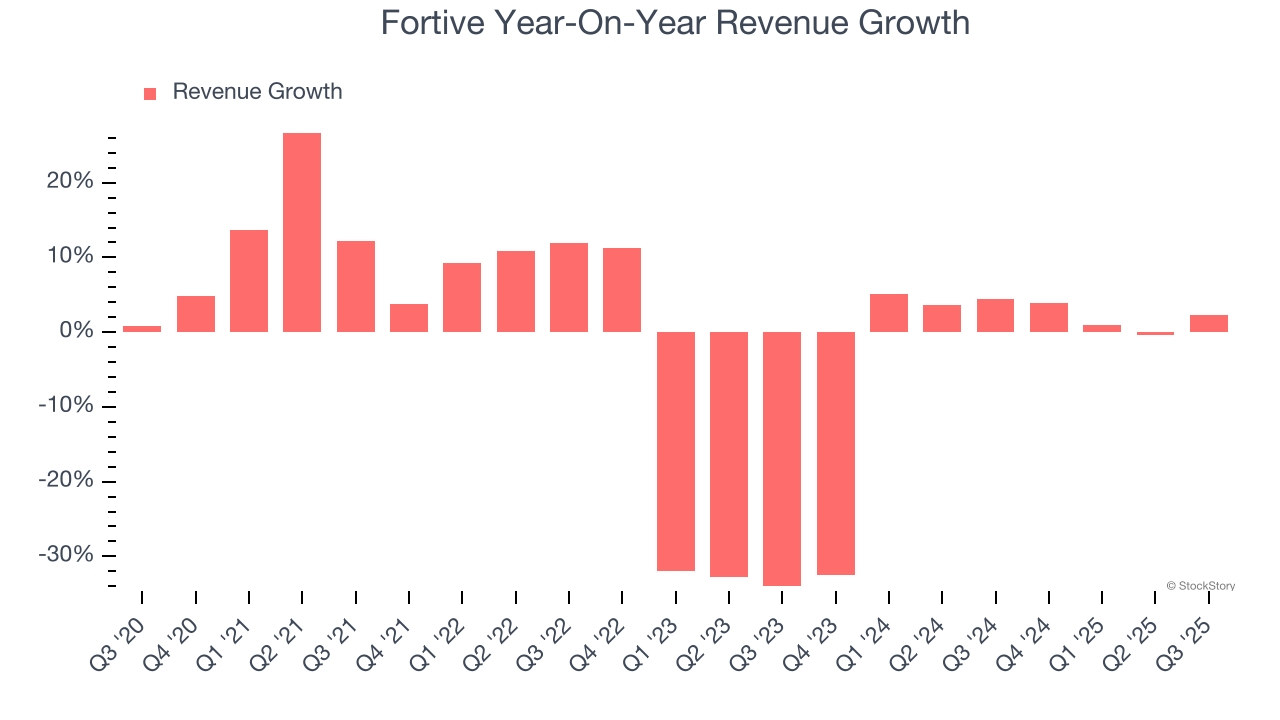
This quarter, Fortive reported modest year-on-year revenue growth of 2.3% but beat Wall Street’s estimates by 1.8%.
Looking ahead, sell-side analysts expect revenue to grow 2.4% over the next 12 months. Although this projection implies its newer products and services will spur better top-line performance, it is still below the sector average.
Today’s young investors won’t have read the timeless lessons in Gorilla Game: Picking Winners In High Technology because it was written more than 20 years ago when Microsoft and Apple were first establishing their supremacy. But if we apply the same principles, then enterprise software stocks leveraging their own generative AI capabilities may well be the Gorillas of the future. So, in that spirit, we are excited to present our Special Free Report on a profitable, fast-growing enterprise software stock that is already riding the automation wave and looking to catch the generative AI next.
Operating Margin
Fortive has been a well-oiled machine over the last five years. It demonstrated elite profitability for an industrials business, boasting an average operating margin of 16.1%. This result isn’t surprising as its high gross margin gives it a favorable starting point.
Looking at the trend in its profitability, Fortive’s operating margin rose by 1.9 percentage points over the last five years, showing its efficiency has improved.
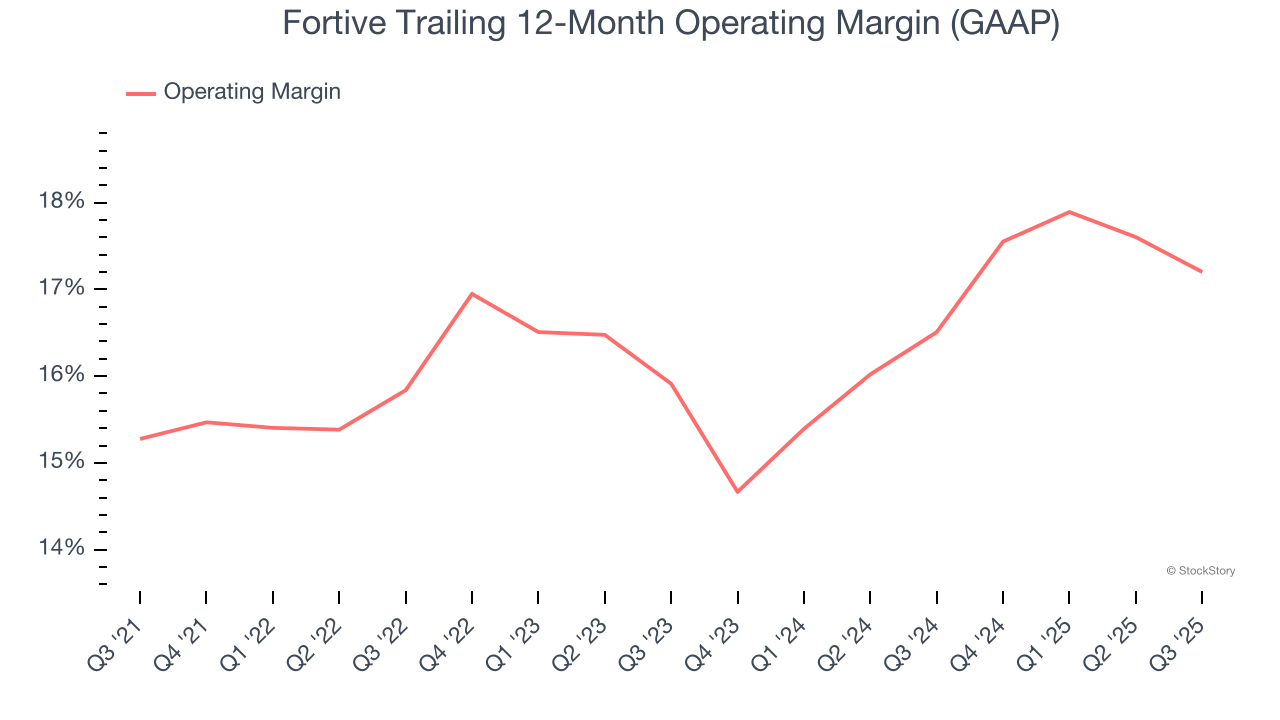
This quarter, Fortive generated an operating margin profit margin of 15.5%, down 1.6 percentage points year on year. Since Fortive’s operating margin decreased more than its gross margin, we can assume it was less efficient because expenses such as marketing, R&D, and administrative overhead increased.
Earnings Per Share
Revenue trends explain a company’s historical growth, but the long-term change in earnings per share (EPS) points to the profitability of that growth – for example, a company could inflate its sales through excessive spending on advertising and promotions.
Fortive’s flat EPS over the last five years was weak but better than its 2.1% annualized revenue declines. This tells us management adapted its cost structure.
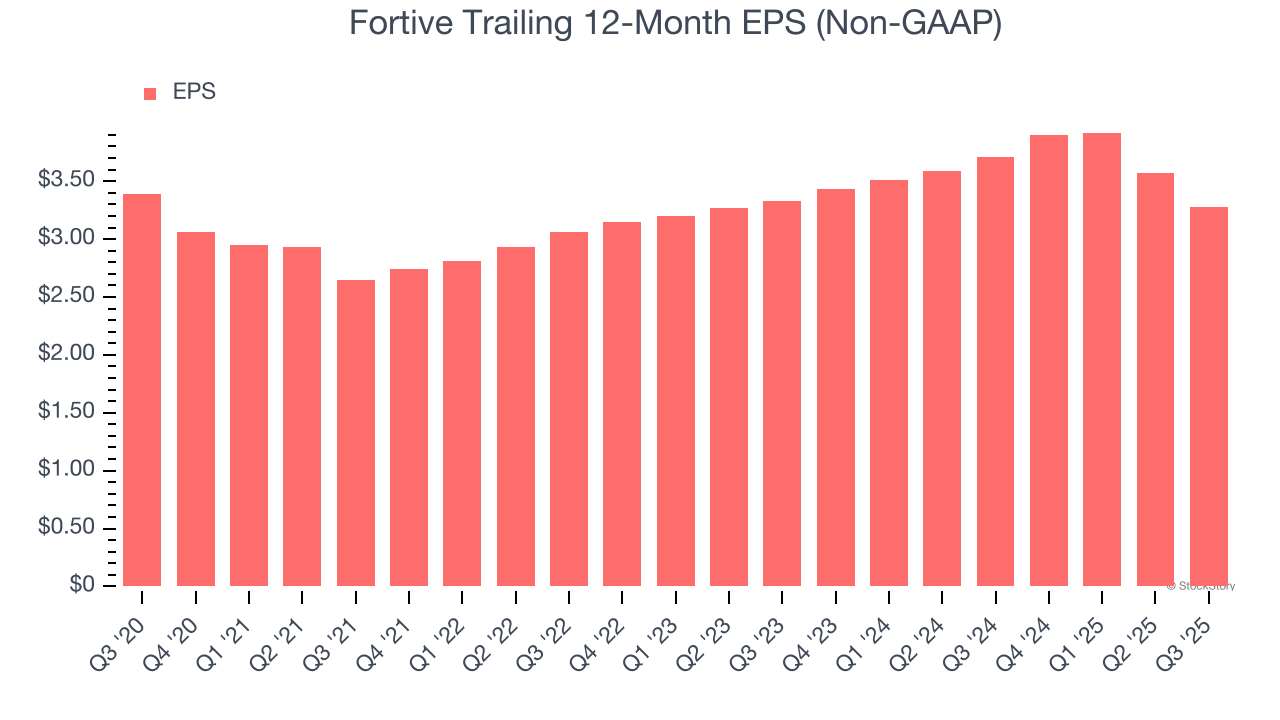
Like with revenue, we analyze EPS over a more recent period because it can provide insight into an emerging theme or development for the business.
Although it wasn’t great, Fortive’s flat two-year EPS topped its two-year revenue performance.
We can take a deeper look into Fortive’s earnings to better understand the drivers of its performance. A two-year view shows that Fortive has repurchased its stock, shrinking its share count by 6.4%. This tells us its EPS outperformed its revenue not because of increased operational efficiency but financial engineering, as buybacks boost per share earnings. 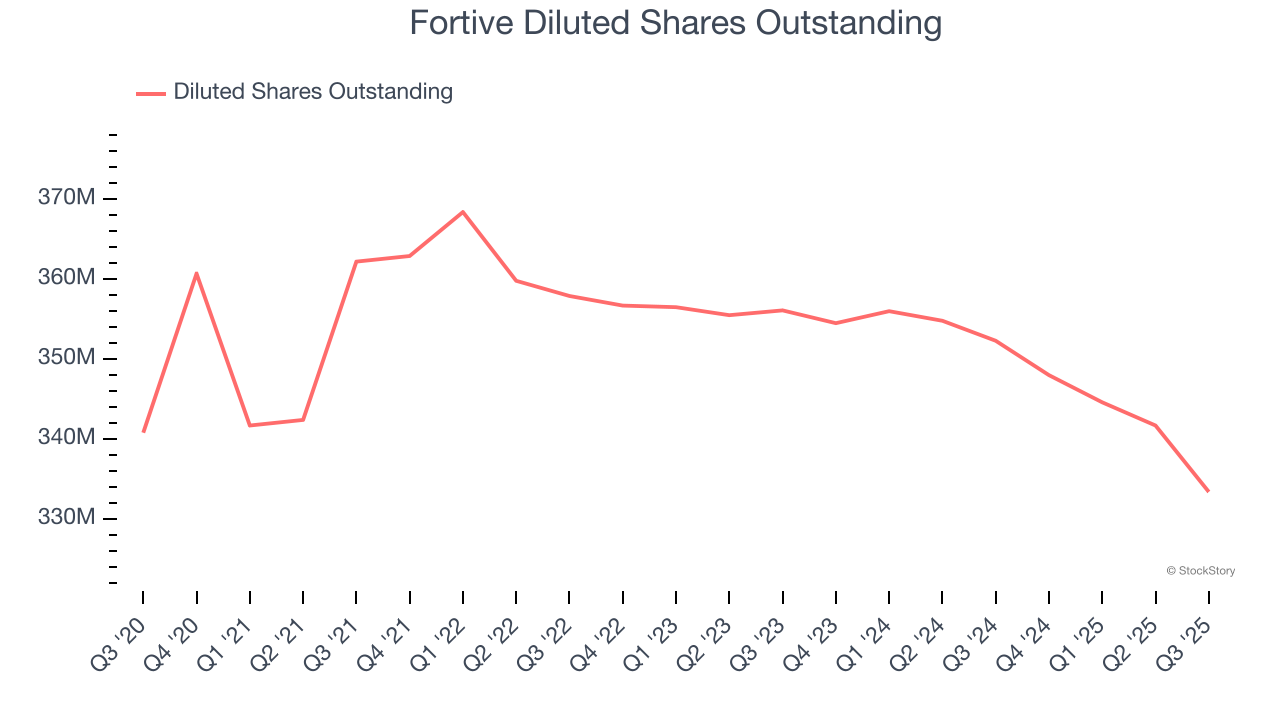
In Q3, Fortive reported adjusted EPS of $0.68, down from $0.97 in the same quarter last year. Despite falling year on year, this print easily cleared analysts’ estimates. Over the next 12 months, Wall Street expects Fortive’s full-year EPS of $3.28 to shrink by 16.6%.
Key Takeaways from Fortive’s Q3 Results
We were impressed by how significantly Fortive blew past analysts’ EBITDA expectations this quarter. We were also glad its full-year EPS guidance trumped Wall Street’s estimates. Zooming out, we think this quarter featured some important positives. The stock traded up 9.1% to $53.65 immediately following the results.
Indeed, Fortive had a rock-solid quarterly earnings result, but is this stock a good investment here? If you’re making that decision, you should consider the bigger picture of valuation, business qualities, as well as the latest earnings. We cover that in our actionable full research report which you can read here, it’s free for active Edge members.
